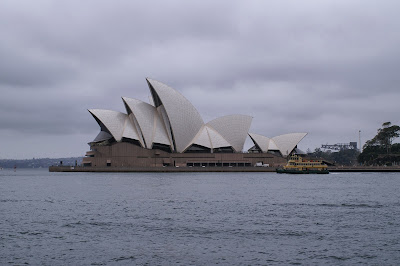The local Aboriginal group is the Kalki people the inhabitants of the region which stretched from the Burrum river in the south to the Baffle creek in the north who were part of the Kabi Language Group. (Edward Curr 1886).
Tha first white man to visit the region was James Davis an escaped convict from the Moreton Bay Penal settlement in 1830. Davis was referred to as Durrumboi by the local Kabi people. (Rev Dunmore Lang 1861, William Ridley 1866). Another man named Alfred Dale Edwards was adopted into the Kalkie speaking clan Yongkonu (Thyeebalang Roth 1910, Archibald Meston 1892) and was given the moiety name Bunda which was part of the four class matrilineal (female descent) moiety system used by the Kabi people whose territory spread from the Caboolture river in the south to the Kolan river in the north. The Kabi moiety names were Balgoin, Barang, Bunda, Derwain and Tandor (Durrumboi in Ridley 1866), the phratry names were Kupaiathin and Dilbai. Gooreng (Gurang) and Wakka inland or wa'pa (slow speech) utilised the moiety name Banjurr in Balgoin's stead (Mathew 1910). Bunda was not a clan sub-tribe or tribe only one of the moiety names ( Dr T H May 1892 Brisbane Courier). Kabi headquarters is in Bundaberg (Kamarangan 2012). The boundary between the Wahr and Kalkie peoples of the Kabi tribe is the Burnett River. The six dialects spoken were Nhulla, Cabbee, Kalkie, Wahr, Gubbi and Karbi (Batjala) as cited by Curr 1886 and Meston 1901. Durumboi referred to the Kabi as the Dippil people.
Queen Maria was the headman (Kamarangan 2012) of the Dilbai phratry over all Kabi people which is an inherited title (Mathew 1910). Maria stated that she was "Queen over all the bloomin' land".
The descendants of Queen Maria of Childers still live in the Bundaberg region (Kamarangan 2012).
Bundaberg as a European township was founded by timbergetters Bob and George Stewart in 1867.
[3] The first farmers in the area, including Thomas Watson, arrived soon after. It was local resident and District Surveyor John Charlton Thompson who received the directive to survey a plot an area on the South side of the river. The city was surveyed, laid out and named Bundaberg in 1870.
[3] It was gazetted a town in 1902 and a city in 1913.
Timber was the first established industry in Bundaberg. In 1868 a sawmill was erected on the
Burnett River downstream from the Steuart and Watson holdings.
[3] The Burnett Sawmill operated for over 100 years at its East Bundaberg location. It was the oldest operating sawmill in the Bundaberg area until it ceased operating on 26 May 2010.
Experimental sugar cane growing in the district followed and a successful industry grew. The first sugar mill was opened in 1882.
[4] The early sugar industry in Bundaberg was the result of the semi-slave labour carried out by
Kanakas.
The naming of Bundaberg's streets was a job for its surveyors, of which there were three. Thompson was assisted by unregistered surveyor assistants James Ellwood and Alfred Dale Edwards.
[5] Edwards preferred using aboriginal names. Kolan, Woongarra, Barolin, Bingera, Kalkie, Moolboolooman, and for streets Tantitha, Bourbong etc. the later local Kalkie name for a large waterhole in front of the old Post Office Cairns Post 1910 P7 18 Jan W.A Dean. It is a common misconception that the main street was incorrectly gazetted in the Bundaberg Mail as "Bourbong" instead of "Bourbon" street and the name persisted. However, Rackemann conducted a survey of letterheads printed between 1904 and 1957.
[5] Up until 1940 the count for both names was near enough to equal, with in some cases companies carrying both spelling variations in successive years. However, by 1941 there is no reference to "Bourbon" street. It is thought more likely that Edwards named it after 'Boorbong', the local name given to a series of waterholes near the Rubyanna area.
[6] (Now East Bundaberg) This is borne out by farmer Robert Strathdee's farming selection in the vicinity of the watering holes being recorded on early survey maps as 'Boorbung'.
[7] The Bourbong was referred to (Howitt 1904) as the name of one of the initiation ceremonies. Harry Aldridge stated that the scars of initiated men differed from that of Fraser Island in that men on Fraser Island had 5 vertical scars on their chest whereas in Bundaberg the Kalki people had 3 scars across the chest. Bourbong is in fact Bairbong, bair (chief) and bong means(dead) which refers to the place a waterhole where a chief was speared through the eye. The Kalki people referred to Bundaberg as Bairbara or place of Chiefs the region was referred to as Borral Borral.
In December 2010, Bundaberg experienced its worst
floods in 60 years with floodwaters from the Burnett River inundating hundreds of homes.
[8]
Just two years later, in January 2013, Bundaberg experienced its worst flooding in recorded history, with floodwaters from the Burnett River peaking at 9.53 meters. As of January 28, 2013, more than 2000 properties have been affected by floodwaters, which moved in excess of 70 km/h. Two defence force Blackhawk helicopters were brought in from Townsville as part of the evacuation operation, which involved a further 14 aircraft.







